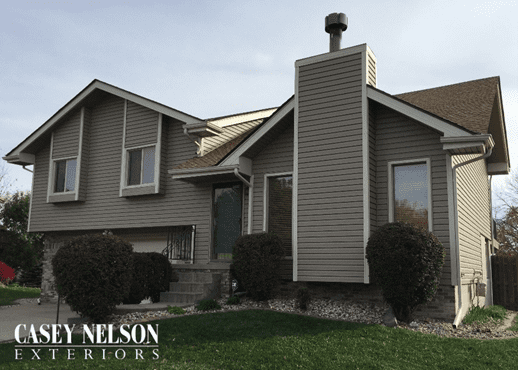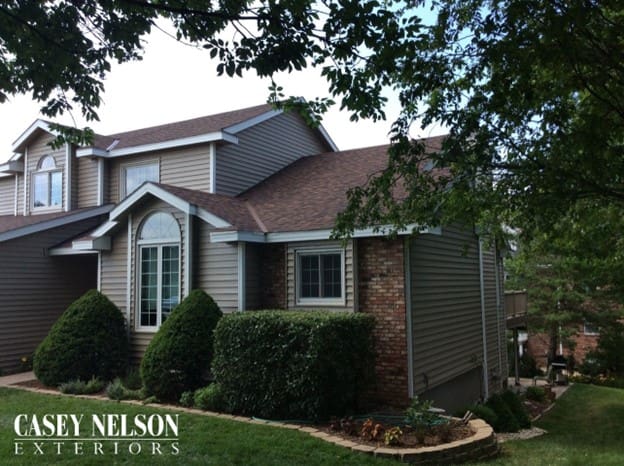When it comes to lowering your homes energy bills homeowners often think of general solutions like changing the thermostat or purchasing new appliances. There are however several strategies that homeowners can utilize to help reduce the cost of heating and cooling your home. Here’s a breakdown of several of those strategies:
Optimize Your Heating and Cooling
- Adjust your thermostat – lowering the thermostat a few degrees in the winter and raising it in the summer, or use a programmable thermostat for automated adjustments to the heating and cooling system.
- Seal air leaks – add caulking or weatherstrip around windows and doors to prevent drafts that allow warm air to escape in the winter and cool air to escape in the summer.
- Insulate your home – be sure walls, attics and crawl spaces are properly insulated to reduce energy loss.
- Use fans – ceiling fans can help circulate air, making spaces feel cooler in the summer and warmer in the winter.
- In summer, ceiling fans should spin counterclockwise to create a cooling downdraft. In winter, they should spin clockwise to circulate warm air near the ceiling downwards. This seasonal adjustment helps optimize comfort and energy efficiency.
- Maintain your HVAC system – clean or replace air filters regularly. Schedule a professional maintenance to ensure optimal performance.
- Check for Gas Leaks – Inspect gas connections for leaks, especially in gas furnaces, and ensure proper combustion.
- Electrical Connections – Ensure all electrical connections are secure and free from damage. Check for any signs of wear or damage in the control box.
- Outdoor Unit – Clear any debris, overgrown plants, or other obstructions from the outdoor unit.
- Ductwork – Inspect ductwork for leaks, blockages, or signs of mold and mildew. Seal any leaks with duct sealant or metal-backed tape.
- Thermostat – Ensure the thermostat is functioning correctly and set to the desired temperature. Check thermostat batteries and replace if needed.
- Carbon Monoxide Detectors – Test and replace batteries in carbon monoxide detectors, if applicable.
- Air Conditioner Specifics:
- Air Filters – Replace or clean air filters regularly (every 1-3 months, or as needed).
- Condenser and Evaporator Coils – Clean the condenser and evaporator coils to remove dust, dirt, and debris that can reduce efficiency.
- Drain Lines – Clean drain lines and drain pans to prevent clogs and overflows.
- Refrigerant – Check refrigerant levels and look for leaks.
- Condenser Fan Motor – Ensure the condenser fan motor is functioning properly and lubricate if necessary.
- Pulleys and Belts – Inspect pulleys and belts for wear and replace if needed.
- Heating System Specifics:
- Heat Exchanger – Inspect the heat exchanger for cracks or damage.
- Burner Assembly – Check the burner assembly for proper flame (blue flame is ideal).
- Ignition System – Inspect the ignition system, including the igniter and flame sensor.
- Flue System – Ensure the flue system is properly attached and free from blockages.
- Gas Pressure – Check gas pressure (if applicable).
Improve Appliance Efficiency
- Upgrade to Energy Star appliances.
- Use appliances efficiently – run full loads of laundry and dishes. Consider using cold water for laundry whenever possible.
- Unplug electronics – devices consume energy even when turned off, so unplug them or use a smart power strip to cut phantom loads.
- Maintain your refrigerator and freezer – keep them at the recommended temperatures and avoid overcrowding.
Change Your Habits
- Turn off lights – switch off lights when leaving a room.
- Minimize hot water usage – take shorter showers, lower your water heater temperatures, and consider installing low-flow fixtures.
- Utilize window coverings – close blinds and curtains during the hottest and coldest parts of the day to regulate temperatures.
- Cook with efficiency – use smaller appliances for quick meals.
- Line dry clothes

Consider Long-Term Investments
Your home’s exteriors not only protect you from the elements of the outside, it also plays a role in the energy your home consumes for heating and cooling. Consider the following factors:
- Optimized insulation and air sealing
- Efficient windows and doors
- The proper roof and siding materials
- Ventilation and moisture control
- Strategic exterior home colors and finishes
When all the components of your home’s exterior work together, they can help make your indoor environment more comfortable without significantly increasing your bills.
- Energy-Efficient Windows and Doors – upgrading to double- or triple-pane windows filled with insulating gas, such as argon or krypton, helps reduce heat transfer. Low-E glass coatings reflect heat while allowing natural light to pass through. Old or poorly sealed doors can also make it harder for the HVAC system to operate efficiently.
- Upgraded Siding with Insulation – siding products that offer added insulation or insulation backing can help reduce heat loss that typically occurs through wall studs. The added layer of protection also helps regulate indoor temperature and reduces energy use.
- Improved Roof Materials – your home’s roof bears the brunt of solar exposure and weather especially in hot or temperamental climates.
- Make sure that you have the proper attic ventilation to allow hot air to escape and reduce the risk of heat buildup that can potentially increase internal temperatures of the home.
- Seal and Insulate Exterior Penetrations – check siding, walls, foundation, and the roof. Exterior penetrations are typically used to pass something from the inside to the outside of the home such as with plumbing, electrical, and HVAC systems. Gaps and cracks around these penetrations can be a source of air leaks and energy loss.
- Install Exterior Awnings or Shading Devices – consider adding awnings, exterior shades, or shutters to windows on the south- and west-sides of your home to help block direct sunlight during peak hours. You can also install a pergola or a seating area with an umbrella to enhance your livable space and reap the benefits of less direct sunshine.
- Upgrade Gutters and Drainage – effective gutter system protects your home from unnecessary moisture, which can damage insulation. Wet insulation starts to degrade and will lose its effectiveness. While you might not be able to see this type of water damage, you’ll likely notice a higher strain on your heating and cooling systems.
- Add Landscaping for Natural Shade – strategically planting trees, shrubs, or climbing vines can block direct sunlight and, inadvertently, save you money on your energy bills. Then, in the winter, the leaves fall, allowing plenty of direct sunlight to warm your home
- Replace or Repaint with Reflective Exterior Paint – dark colors, such as black, attract and retain sunlight, which can increase the temperature of a building. Light-colored or reflective paints and coatings have the opposite effect. They reflect more sunlight and reduce the amount of heat that’s absorbed by your home’s exterior, thus lowering indoor temperatures and minimizing the load on your air conditioning system.
- Install Solar Panels or Solar Shingles
Improving your home’s exterior isn’t always just about curb appeal or property value; it’s a smart investment in energy efficiency and monthly savings. Regardless of which energy-efficient home upgrades you choose to make, every little step matters!
Contact Casey Nelson Exteriors for your Siding, Roofing, Window, and Gutter needs.




